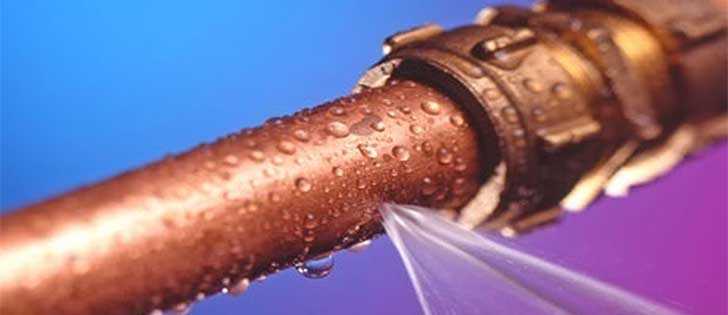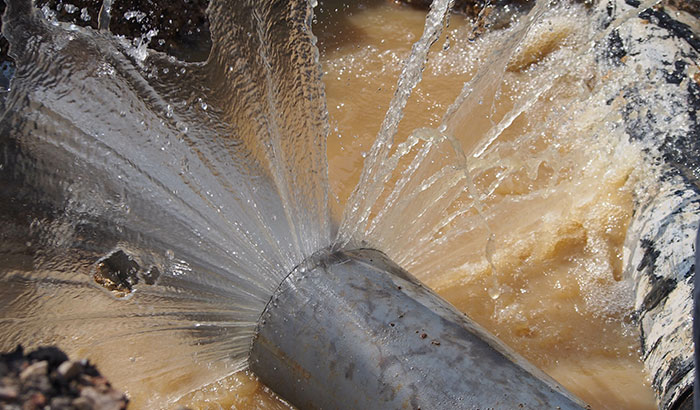Burst Pipe Insurance Claims: What You Need to Know for Water Damage Coverage
Burst Pipe Insurance Claims: What You Need to Know for Water Damage Coverage
Blog Article
Preventing Ruptured Water Lines: Necessary Tips to Safeguard Your Pipes
Avoiding burst pipelines is an important issue for house owners, particularly during colder months when the risk of freezing is heightened. Applying strategic actions such as proper insulation, regular evaluations, and keeping constant indoor temperatures can considerably decrease the likelihood of pipeline failing.
Understand Pipeline Vulnerabilities
Comprehending pipe susceptabilities is essential for reliable pipes maintenance and preventing pricey damages. A number of aspects add to the susceptibility of pipelines to bursts, including material make-up, age, and ecological conditions. Older pipelines, especially those made from galvanized steel or polybutylene, usually degrade gradually, leading to boosted threat of leaks and ruptures.
Temperature changes can additionally considerably impact pipe stability. In colder climates, water entraped in pipes can freeze, broadening and putting in pressure on the pipe walls, which might inevitably lead to a burst. Moreover, high water stress can strain pipelines, particularly at joints and bends, increasing the possibility of failing.

Insulate Piping Properly
Proper insulation of pipelines is critical for preventing freezing and subsequent bursts during winter (burst pipe). Shielding your plumbing system successfully safeguards versus temperature level goes down that can bring about expensive damage. Begin by identifying at risk areas where pipelines are exposed to outside temperature levels, such as cellars, attic rooms, and exterior wall surfaces
Usage foam pipeline insulation sleeves or wrap insulation tape around these areas to give a safety obstacle. Guarantee that all sections of the pipelines, particularly those with minimal warm exposure, receive sufficient insulation. Pay unique interest to installations and joints, as these are more susceptible to cold.
When protecting, it's vital to choose products that fulfill local building regulations and are appropriate for the specific setting. Fiberglass insulation is frequently advised for its thermal resistance properties. In addition, think about using warmth cable televisions or tape in extreme problems, which can be plugged in to supply supplemental heat
Routinely check insulated pipelines for any kind of indications of wear or damages, as jeopardized insulation can lessen its efficiency. By taking these aggressive procedures, you significantly minimize the risk of pipeline bursts, making certain a dependable plumbing system throughout the winter season.
Maintain Regular Temperature
A steady indoor temperature is essential for preventing burst pipelines throughout the icy months. When temperature levels drop, water within pipelines can ice up, expanding and creating pressure that may ultimately cause the pipes to burst.Making use of a programmable thermostat can aid take care of interior temperatures properly, ensuring that spaces with plumbing remain warm also when the home is unoccupied.
Additionally, it is sensible to allow taps to drip a little during severe cold snaps. This small circulation of water can stop freezing by alleviating stress within the pipes. Throughout particularly severe climate events, think about temporarily suspending any type of nighttime problems on your thermostat to keep a consistent warm setting. By implementing these strategies, property owners can dramatically reference decrease the danger of pipeline bursts and guard their pipes systems against the severe winter months components.
Frequently Inspect Plumbing
Routine learn this here now assessments of pipes systems are critical for preventing burst pipes and maintaining overall home integrity. Routine checks allow homeowners to identify prospective concerns prior to they rise right into pricey fixings or significant water damages. Throughout these assessments, it is important to take a look at noticeable pipes for signs of rust, leaks, or use. Pay special attention to locations susceptible to cold, such as cellars, attics, and outside walls.
Additionally, checking joints and connections is crucial, as these factors are typically vulnerable to leaks. Property owners should additionally examine water stress degrees, as too much stress can stress the plumbing system and boost the risk of pipeline bursts.
Consider scheduling specialist plumbing examinations a minimum of annually, especially prior to winter season, to ensure your system is prepared for cooler temperatures. Regular assessments not just help in determining immediate worries but additionally foster long-term maintenance approaches that can improve the life expectancy of your pipes system. By being proactive in your strategy, you can safeguard your home versus the costly and turbulent repercussions of burst pipelines. Prioritizing pipes inspections is a financial investment in your home's health and wellness.
Know Emergency Procedures
Recognizing emergency procedures is vital for every homeowner, especially after performing normal pipes assessments. Being prepared for a plumbing emergency can considerably reduce damage and conserve prices.
Next, keep essential devices helpful. A plumbing emergency package must include a wrench, bettor, and towels, in addition to a flashlight and a bucket for tiny leaks. In addition, think about having the contact details for a relied on plumbing professional conveniently available, must the situation rise beyond your control.
If you spot a leakage or burst pipeline, immediately transform off the supply of water and notify your plumber. Furthermore, record the damages with pictures for insurance purposes. burst pipe. Understand the indicators of prospective pipes problems, such as unusual water stress changes or damp places on walls
Eventually, aggressive understanding and speedy action are vital in handling plumbing emergency situations, guaranteeing your home remains protected and decreasing prospective damages.

Final Thought
To conclude, preventing ruptured pipes demands a complex technique that includes understanding pipeline susceptabilities, proper insulation, keeping regular interior temperature levels, normal inspections, and expertise of emergency situation treatments. By applying these crucial approaches, the danger of plumbing failings can be substantially decreased, thereby making sure the durability and performance of the plumbing system. Proactive steps not just secure versus prospective damages however additionally add to overall water preservation and the security of residential or commercial property.
In cooler Homepage climates, water trapped in pipes can freeze, broadening and applying pressure on the pipe walls, which may eventually lead to a ruptured. When temperatures decrease, water within pipelines can freeze, expanding and producing stress that may inevitably cause the pipes to ruptured. By applying these techniques, home owners can considerably minimize the threat of pipe ruptureds and safeguard their plumbing systems against the rough winter components.

Report this page